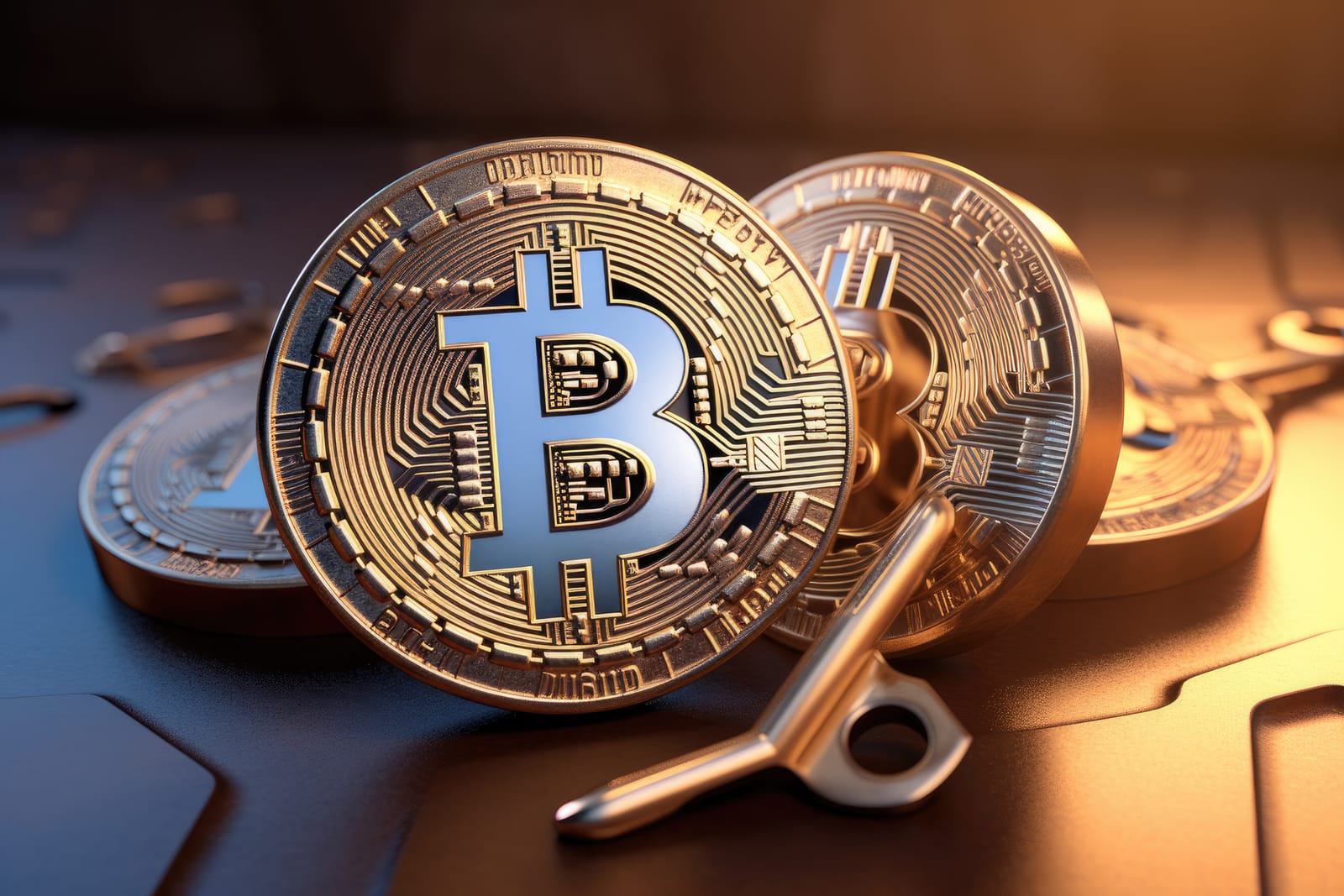Introduction
The realm of blockchain technology and cryptocurrencies has long been perceived as distinct from the traditional financial markets and tangible assets. However, a revolutionary concept is bridging this gap – the tokenization of real-world assets (RWAs). By transforming physical assets into digital tokens on the blockchain, tokenization presents a paradigm shift in how we perceive, trade, and manage valuable assets.
This comprehensive guide delves into the intricacies of RWA tokenization, exploring its mechanisms, applications, and the transformative impact it holds for various industries. We will navigate through the process of tokenization, the diverse asset classes it encompasses, and the myriad benefits it offers, while also addressing the challenges and potential risks that must be navigated.
Whether you are an investor seeking new opportunities, an entrepreneur exploring innovative business models, or simply curious about the intersection of traditional finance and cutting-edge technology, this article will equip you with a thorough understanding of this groundbreaking concept.
The Evolution of Asset Tokenization
The concept of tokenizing real-world assets (RWAs) emerged during the initial coin offering (ICO) boom of 2017-2018, when the narrative of representing traditionally illiquid assets like real estate, commodities, art, and collectibles on the blockchain was widely touted. Although the initial hype failed to materialize, subsequent developments in decentralized finance (DeFi) and non-fungible tokens (NFTs) reignited interest in this domain.
As DeFi technology advanced, the potential applications of RWA tokenization expanded to encompass a broader range of assets, including financial products like stocks, bonds, derivatives, futures, and intellectual property (IP). This evolution paved the way for a more comprehensive understanding of the tokenization process and its far-reaching implications.
Understanding Real-World Asset Tokenization
Real-world asset tokenization refers to the process of converting tangible or intangible assets into digital tokens that are securely stored on a blockchain or distributed ledger. These tokens represent ownership or rights over the underlying physical asset, enabling fractional ownership, seamless trading, and a host of other benefits.
The tokenization process typically involves the following steps:
- Asset Identification and Valuation: The first step is to identify and assess the value of the real-world asset to be tokenized. This could be anything from real estate, artwork, commodities, or intellectual property.
- Legal and Regulatory Compliance: Ensuring adherence to applicable laws and regulations is crucial. Legal entities like Special Purpose Vehicles (SPVs) may be established to facilitate tokenization while complying with relevant rules.
- Smart Contract Creation: Blockchain-based smart contracts are developed to specify the rules and conditions governing the creation, management, and trading of the tokens.
- Blockchain Platform Selection: A suitable blockchain platform, such as Ethereum or others supporting tokenization features, is chosen for token issuance and management.
- Token Creation and Issuance: Digital tokens representing fractional ownership or rights over the physical asset are minted and issued on the selected blockchain, often following established token standards like ERC-20 or ERC-721.
- Ownership Record and Trading: The blockchain maintains an immutable and transparent ledger, recording token ownership and facilitating secure trading and transfer of these tokenized assets.
- Asset Custody and Security: Robust custody solutions and security measures are implemented to safeguard the underlying physical assets represented by the tokens.
Types of Tokens Used in Asset Tokenization
Asset tokenization on the blockchain involves various token types, broadly categorized based on their nature and function. The first category classifies assets by their inherent characteristics, distinguishing between:
- Tangible Assets: Physical assets with a specific monetary value and form, such as real estate, commodities, or artwork.
- Fungible Assets: Tokens that are interchangeable and have equivalent value, like most cryptocurrencies.
- Non-Fungible Assets: Unique and indivisible assets, often used for tokenizing digital or physical art, collectibles, and one-of-a-kind items.
The second category comprises:
- Currency Tokens: Representing fiat currencies in digital form, often used in connection with stablecoins.
- Utility Tokens: Issued for fundraising or providing benefits within a specific crypto ecosystem, but may not be actively traded.
- Security Tokens: Mirroring traditional securities and aligning with cryptocurrency trends, these tokens represent ownership or rights to tradable financial assets.
Some common types of tokens used in asset tokenization include:
- Equity Tokens: Representing ownership in a company, similar to traditional equity shares.
- Real Estate Tokens: Enabling fractional ownership or rights to real estate properties.
- Commodity Tokens: Representing ownership or rights to physical commodities like precious metals or energy resources.
- Debt Tokens: Representing ownership of debt instruments, such as bonds or loans, with potential interest payments or repayment rights.
- Revenue Sharing Tokens: Entitling holders to a share of the revenue generated by a particular project or business.
- Non-Fungible Tokens (NFTs): Representing unique and indivisible assets, often used for tokenizing digital or physical art, collectibles, and unique items.
- Asset-Backed Tokens: Pegged to the value of a specific underlying asset, such as a fiat currency, precious metal, or real estate.
- Governance Tokens: Providing holders with voting rights in decentralized autonomous organizations (DAOs) or other governance structures.
The choice of token type depends on the nature of the asset, regulatory considerations, and the desired features for investors or users.
Benefits of Real-World Asset Tokenization
The tokenization of real-world assets offers numerous benefits that can transform how traditional assets are owned, traded, and managed. Here are some key advantages:
- Liquidity Enhancement: Tokenizing assets makes them more liquid, enabling investors to buy and sell tokenized fractions on secondary markets, providing greater flexibility and reducing the typical illiquidity associated with certain assets.
- Fractional Ownership: Asset tokenization allows for fractional ownership, enabling investors to buy and own small portions of high-value assets, democratizing access to traditionally exclusive investments.
- Global Accessibility: Tokenization enables global access to assets, fostering a more inclusive investment environment where investors from anywhere in the world can participate in ownership and trading.
- Reduced Barriers to Entry: By enabling fractional ownership and lowering minimum investment thresholds, asset tokenization reduces barriers to entry for a broader range of investors, including retail investors with limited capital.
- Efficiency and Automation: Smart contracts automate various processes, such as dividend distributions, voting rights, and compliance checks, reducing administrative overhead and streamlining operations.
- Transparency and Security: Blockchain technology ensures transparent and secure record-keeping, reducing the risk of fraud, errors, and disputes by creating an immutable ledger of ownership details and transactions.
- Faster Transactions: Tokenized assets can be traded on blockchain-based exchanges, facilitating faster settlement times compared to traditional financial markets, accelerating the entire transaction process.
- Increased Market Efficiency: Asset tokenization contributes to market efficiency by making it easier to price, trade, and transfer ownership of assets, leading to more accurate and dynamic pricing based on market demand.
- Enhanced Asset Utilization: Tokenizing assets can result in better utilization by enabling owners to unlock value by selling tokenized fractions without relinquishing complete ownership.
- Diversification Opportunities: Tokenization enables investors to diversify their portfolios across various asset classes, participating in the ownership of real estate, art, startups, or other assets traditionally difficult to access or diversify.
- Reduction in Middleman Costs: By leveraging blockchain technology and smart contracts, asset tokenization can reduce the need for intermediaries, lowering transaction costs and increasing investment process efficiency.
- Compliance and Auditing: Blockchain’s transparency and immutability support compliance and auditing processes, providing regulators and auditors with real-time access to ownership records and transactions, enhancing regulatory compliance.
While asset tokenization offers these benefits, it is essential to address challenges related to regulatory compliance, legal frameworks, and market acceptance to ensure successful implementation and widespread adoption.
Potential Drawbacks and Challenges
While the tokenization of real-world assets presents numerous advantages, it also faces certain challenges and potential drawbacks that must be carefully considered:
- Regulatory Uncertainty: Regulatory frameworks for tokenized assets are still evolving, and there may be uncertainty or variations in regulations across jurisdictions. Compliance with existing securities laws can be complex, and regulatory changes may impact the tokenization landscape.
- Legal Complexity: Tokenization requires careful legal structuring to ensure alignment with local laws. Determining ownership rights, handling disputes, and addressing legal nuances associated with tokenized assets can be intricate.
- Market Acceptance: Traditional markets and institutional investors may be hesitant to embrace tokenized assets, resulting in slower market acceptance. Education and awareness efforts are crucial to overcome skepticism and promote adoption.
- Smart Contract Risks: While smart contracts provide automation, they are not immune to vulnerabilities or bugs. Coding errors in smart contracts can lead to security breaches, financial losses, or unintended consequences.
- Technology Risks: Blockchain technology, though robust, is still relatively new. Projects may face technological challenges, including scalability issues, interoperability concerns, and the need for ongoing software updates.
- Lack of Standardization: The absence of standardized practices and interoperability between different blockchain networks can hinder the seamless transfer and trading of tokenized assets across platforms.
- Privacy Concerns: Blockchain’s transparency, while an advantage, may raise privacy concerns. The public nature of blockchain transactions could expose sensitive information about asset ownership and transactions.
- Market Manipulation Risks: Smaller markets, especially in the early stages of tokenization, may be susceptible to price manipulation, pump-and-dump schemes, and other market irregularities.
- Digital Security Risks: Digital assets are susceptible to cybersecurity threats, including hacking attempts, phishing attacks, and unauthorized access. The security of private keys is crucial to protecting tokenized assets.
- Cultural and Behavioral Barriers: Cultural and behavioral factors may slow down the adoption of tokenized assets. Traditional mindsets, lack of understanding, or resistance to change can impede widespread acceptance.
- Market Volatility: Digital assets, including tokenized securities, can be subject to high volatility. Price fluctuations may impact the perceived value and stability of tokenized assets.
- Overvaluation of Tokenized Assets: The tokenization of certain assets may lead to overvaluation due to speculative trading. Token prices may not always reflect the true underlying value of the asset.
- Environmental Concerns: Depending on the underlying blockchain’s consensus mechanism, environmental concerns may arise, particularly in proof-of-work networks with high energy consumption.
It is crucial for stakeholders, including regulators, investors, and project developers, to carefully address these challenges and work towards creating a robust and sustainable ecosystem for asset tokenization.
Real-World Asset Tokenization in Practice
While the concept of tokenizing real-world assets is still evolving, several pioneering efforts have been undertaken to bring this idea to fruition. Here are some notable examples:
- Financial Assets: Protocols like MakerDAO have experimented with tokenizing U.S. treasuries and facilitating mortgage loans. Chainlink has created tools to enable communication between blockchains and off-chain payment networks like SWIFT, increasing access to traditional banking assets and enhancing liquidity.
- Commodities: The tokenization of commodities, such as precious metals, energy resources, and agricultural products, presents a revolutionary alternative to futures markets, optimizing trading, settlement, and reducing costs while enhancing transparency.
- Intellectual Property: The tokenization of intellectual property rights, including copyrights, unique data, code, patents, and trademarks, opens new investment opportunities and revenue streams for creators, enabling them to make property rights accessible to a wider range of investors.
- Real Estate: Numerous projects have explored tokenizing real estate assets, enabling fractional ownership of properties like commercial buildings, residential homes, undeveloped land, and Real Estate Investment Trusts (REITs). This democratizes the real estate industry and provides greater transparency, accessibility, and liquidity.
- Art and Collectibles: The tokenization of art pieces, antiques, and collectibles has made the exclusive art market more accessible. Investors can now buy, own, and trade fractions of high-value assets, transforming how we interact with art and unique items.
While these efforts are still in their early stages, they demonstrate the potential for tokenization to revolutionize various industries and asset classes, fostering greater inclusivity, liquidity, and efficiency.
Regulatory Landscape and Legal Considerations
One of the significant challenges facing the widespread adoption of real-world asset tokenization is the lack of a comprehensive regulatory framework, particularly in the United States. While several bills have been introduced in Congress and executive agencies have issued reports in response to the Digital Assets Executive Order, clarification is still needed to create a robust legal environment.
Addressing regulatory uncertainties and establishing clear guidelines are crucial for promoting innovation while ensuring investor protection. A well-defined legal framework would not only benefit financial institutions by reducing costs and friction but also empower investors and entrepreneurs to explore new opportunities and build custom products leveraging tokenized assets.
Furthermore, a clarified regulatory environment could facilitate the tokenization of assets like intellectual property and carbon credits, broadening the range of investment opportunities and contributing to environmental goals through transparent and diverse carbon offset solutions.
Rather than restricting the development of tokenized assets without providing a means for responsible innovation, it is essential to empower entrepreneurs and investors to build in a way that benefits market participants while adhering to appropriate safeguards.
Spot Bitcoin ETFs and Their Implications
A recent development in the regulatory landscape has been the approval of eleven new spot Bitcoin Exchange-Traded Funds (ETFs) in the United States. Unlike derivative Bitcoin ETFs, which have been available since 2021, these spot Bitcoin ETFs invest directly in bitcoins as their underlying asset, linking them directly to the secure custody of bitcoins rather than speculative futures contracts.
The emergence of spot Bitcoin ETFs may indicate that the tokenization of real-world tangible assets, held securely and tracked transparently on a blockchain, could be amenable to regulation. Commodities and other tangible assets represented by tokens could potentially be traded through ETFs, increasing the liquidity of smaller or specialized markets for such assets.
This development could facilitate the creation and trading of assets like carbon credits, offsets, or specific quantities of biofuels that might otherwise lack large initial markets. The reported popularity of the new spot Bitcoin ETFs among investors, surpassing silver as the second-largest ETF commodity class in terms of assets under management within the first week of trading, further underscores the potential demand for tokenized real-world assets.
Integration with Decentralized Finance (DeFi)
The tokenization of real-world assets (RWAs) is emerging as a significant trend in decentralized finance (DeFi), merging traditional financial assets with innovative blockchain technology. As of the end of 2023, the total value locked (TVL) in projects associated with RWA tokenization reached an impressive $5.65 billion, securing the eighth position in the DeFi sector by total TVL and signaling continued growth and expansion in this niche.
The integration of tokenized assets into DeFi platforms enhances liquidity and accessibility, enabling users to access, trade, and utilize these assets in a decentralized and borderless manner. RWAs in DeFi represent a unique fusion of classic assets with features typical of decentralized finance, such as automated market makers (AMMs), liquidity pools, and lending protocols.
However, unlike traditional DeFi projects, the tokenization of RWAs entails additional compliance requirements, including the need for Know Your Customer (KYC) procedures, as these projects are directly linked to real-world assets and must consider the regulatory framework of the country in which they are implemented.
Looking ahead, the tokenization of real-world assets is expected to gain momentum as more traditional assets begin to enter the digital realm through tokenization. This not only creates new opportunities for investors and market participants but also facilitates the integration of traditional and digital financial systems, paving the way for a more global and accessible financial world.
Future Trends and Developments
The future of real-world asset tokenization stands as a transformative force poised to reshape conventional finance, investment practices, and ownership paradigms. Anticipated trends suggest a promising trajectory, with increased adoption across diverse industries as regulatory frameworks mature and market participants recognize the manifold benefits.
The spectrum of tokenized assets is expected to broaden, encompassing intellectual property, fine art, collectibles, and other unique classes, fostering novel investment opportunities. As interoperability between blockchain networks improves, asset transfer efficiency may rise, and seamless integration with traditional finance, driven by institutional players, is likely.
Regulatory frameworks will evolve, balancing innovation and investor protection, while decentralized finance (DeFi) platforms may increasingly incorporate tokenized assets, enhancing liquidity and accessibility. Standardization, increased investor access, innovative asset management solutions, and the integration of advanced technologies like artificial intelligence (AI) and the Internet of Things (IoT) further contribute to a dynamic future.
Challenges, including regulatory uncertainties, security concerns, and the need for standardization, must be addressed collaboratively to ensure the robust and sustainable development of asset tokenization. However, the potential for this technology to democratize access to traditionally illiquid assets, increase market efficiency, and unlock new investment opportunities is un Paralleled, making it a disruptive force that could redefine the financial landscape as we know it.
Exploring Tokenization’s Environmental Impact
Beyond its financial implications, asset tokenization holds the potential to contribute to environmental sustainability efforts. The tokenization of carbon credits and offsets could revolutionize how we approach climate change mitigation strategies. By leveraging blockchain technology’s transparency and immutability, tokenized carbon credits would provide a secure and verifiable record of emissions reductions, fostering trust and accountability in carbon markets.
Furthermore, the programmability of tokens could enable the creation of smart contracts that automate the distribution and retirement of carbon credits, streamlining processes and reducing administrative overhead. This could incentivize more businesses and individuals to participate in carbon offset programs, driving greater investment in sustainable practices and renewable energy projects.
However, it is crucial to address the potential environmental impact of the underlying blockchain infrastructure itself. Proof-of-work consensus mechanisms, which are energy-intensive, may raise concerns about the carbon footprint of tokenization efforts. As such, the adoption of more energy-efficient consensus algorithms, such as proof-of-stake or other innovative solutions, could be vital in mitigating the environmental impact of asset tokenization.
Addressing Security and Privacy Concerns
As with any emerging technology involving digital assets, security and privacy concerns are paramount in the realm of real-world asset tokenization. While blockchain technology offers inherent security features through its decentralized and immutable nature, the tokenization process and the custody of underlying physical assets introduce new attack vectors that must be carefully addressed.
Robust cybersecurity measures, including advanced encryption techniques, multi-factor authentication, and secure key management protocols, are essential to protect tokenized assets from unauthorized access, theft, or manipulation. Regular security audits and penetration testing should be conducted to identify and mitigate potential vulnerabilities proactively.
Additionally, the privacy implications of tokenized assets must be carefully considered. While the transparency of blockchain transactions is often touted as a benefit, it may raise concerns about the exposure of sensitive information related to asset ownership and transactions. Privacy-enhancing technologies, such as zero-knowledge proofs and confidential transactions, could be explored to strike a balance between transparency and data protection.
Collaboration between industry stakeholders, regulators, and security experts is crucial in establishing best practices and standards for secure and privacy-preserving asset tokenization. Continuous innovation and adaptation to emerging threats will be necessary to maintain the integrity and trust in this transformative technology.
Fostering Adoption and Education
Despite the numerous benefits and potential of real-world asset tokenization, widespread adoption may face cultural and behavioral barriers. Traditional mindsets, lack of understanding, or resistance to change can impede the acceptance of this disruptive technology.
To overcome these challenges, concerted efforts must be made to educate and raise awareness among various stakeholders, including investors, businesses, and regulatory bodies. Clear and accessible educational resources, such as whitepapers, webinars, and interactive demonstrations, can help demystify the concept of asset tokenization and highlight its practical applications.
Furthermore, fostering collaboration between traditional financial institutions and blockchain innovators could facilitate knowledge sharing and accelerate the integration of tokenized assets into existing financial systems. Pilot projects and proof-of-concept initiatives could provide valuable insights and real-world examples, demonstrating the tangible benefits of asset tokenization to skeptical audiences.
Industry associations, academic institutions, and thought leaders can play a crucial role in promoting research, disseminating best practices, and advocating for supportive policies and regulations. By cultivating a well-informed and engaged community, the adoption of real-world asset tokenization can be accelerated, unlocking its transformative potential across diverse sectors.
Conclusion
The tokenization of real-world assets represents a paradigm shift in how we perceive, trade, and manage valuable assets. By leveraging blockchain technology, this revolutionary concept bridges the gap between traditional financial markets and the digital realm, fostering greater liquidity, accessibility, and transparency.
From real estate and art to commodities and intellectual property, the tokenization of physical assets introduces fractional ownership, democratizing investment opportunities and enabling a broader range of investors to participate in previously exclusive markets. Smart contracts automate processes, reducing administrative overhead and enhancing efficiency, while the immutable nature of blockchain ensures secure and transparent record-keeping.
However, the journey towards widespread adoption of real-world asset tokenization is not without its challenges. Regulatory uncertainties, legal complexities, and technological risks must be navigated carefully. Collaboration between industry stakeholders, regulators, and innovators is crucial to establish a robust legal framework, address security and privacy concerns, and foster a sustainable ecosystem for tokenized assets.
As the tokenization landscape continues to evolve, the integration with decentralized finance and the exploration of novel applications, such as carbon credit tokenization, present exciting opportunities for innovation and environmental sustainability. Fostering education and awareness will be instrumental in overcoming cultural barriers and driving widespread adoption.
The potential of real-world asset tokenization to democratize investment, increase market efficiency, and unlock new revenue streams is undeniable. As we forge ahead, embracing this disruptive technology with a balanced approach that prioritizes innovation, investor protection, and environmental consciousness, we stand to redefine the boundaries of traditional finance and usher in a new era of inclusive and transparent asset ownership.
Propy (PRO) is an Ethereum-based digital asset focused on revolutionizing the real estate industry through blockchain technology. Its core objective is to tokenize real estate ownership rights as Non-Fungible Tokens (NFTs), enabling the seamless and trustless transfer of these rights. Propy envisions making real estate transactions as convenient and accessible as e-commerce by digitizing the entire process from start to finish. The Propy token (PRO) plays a crucial role within this ecosystem, serving as the medium for settling transactions and accessing data on the Propy network.










